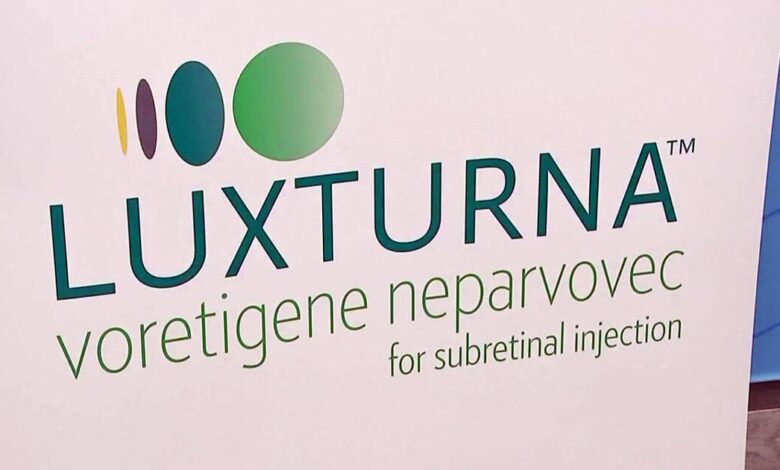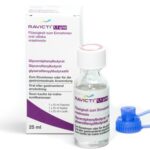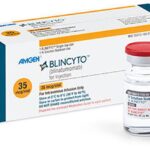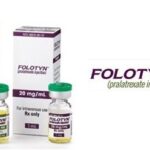Luxturna: Uses, Side Effects, Price, Warnings, Reviews

Luxturna is an FDA approved medicine that is used to treat adults and children with loss of vision due to inherited retinal dystrophy, a rare genetic disorder of the retina (the light sensitive membrane at the back of the eye). Luxturna can only be used while patients still have enough functioning cells left in the retina and when the disease is caused by mutations (changes) in the gene RPE65. RPE65 is responsible for the production of an enzyme called all-trans retinyl isomerase, which is necessary for the normal functioning of retinal cells.
Luxturna contains the active substance voretigene neparvovec and is a type of advanced therapy medicine called a ‘gene therapy product’. This is a type of medicine that works by delivering genes into the body.
Inherited retinal dystrophy is rare, and Luxturna was designated an ‘orphan medicine’ (a medicine used in rare diseases) for two forms of the disease on various dates.
How does Luxturna work?
Luxturna consists of a virus that contains normal copies of the RPE65 gene. When Luxturna is injected into the eye, the virus carries the RPE65 gene into the retinal cells and enables them to produce the missing enzyme. This helps the cells in the retina to function better, slowing down the progression of the disease.The type of virus used in this medicine (adeno-associated virus) does not cause disease in humans.
How is Luxturna used?
Luxturna can only be obtained with a prescription and treatment should be given by a surgeon experienced in performing eye surgery. Luxturna is given as a single injection into the back of each eye, under the retina. The second eye should be treated at least 6 days after the first. Patients should start receiving immunosuppressant medicines (medicines that reduce the activity of the immune system, the body’s natural defences) 3 days before Luxturna is injected into the first eye, to lower the risk of the medicine being rejected by the body, and this treatment should continue for 14 days after injection.
What benefits of Luxturna have been shown in studies?
Luxturna was investigated in one main study involving 31 patients with inherited retinal dystrophy due to RPE65 mutations. The main measure of effectiveness was how well patients performed in a mobility test, where they were required to navigate a route with turns and obstacles under various light settings. Patients were considered to have passed the test if they completed the route within 3 minutes and bumped into no more than 3 obstacles.
After one year of treatment, patients treated with Luxturna improved their scores by 1.8 points, while patients who were not given Luxturna improved their scores by 0.2 points, meaning that patients treated with Luxturna were able to move better along the route. Additionally, 13 of the 21 patients (62%) treated with Luxturna passed the mobility test at the lowest light level of 1 lux (similar to conditions of a poorly lit pavement at night), while none of the patients not given the medicine were able to do so. The improvement in patients’ vision was maintained for at least three years.
What are the risks associated with Luxturna?
The following serious side effects may occur during or after the administration of Luxturna:
- Eye infections, including a serious infection inside of the eye called endophthalmitis, that may lead to blindness.
- Permanent decline in visual acuity, or the sharpness of central vision.
- Changes in the retina (the thin layer of tissue in the back of the eye) that can lead to vision loss including:
- development of a hole, thinning, or loss of function of the retina, separation of the layers in the center of the retina, or bleeding in the retina.
- breaks in or wrinkling on the surface of the retina or detachment of the retina.
- Increased pressure inside of the eye. You should follow-up with your healthcare professional as instructed to detect and treat any increased pressure in the eye as this may cause blindness.
- Expansion of the air bubble formed in the eye after administration of Luxturna. You should avoid air travel, travel to high elevations, or scuba diving until your healthcare professional has told you that the air bubble formed in the eye following administration of Luxturna has disappeared. Engaging in these activities while the air bubble is present can cause permanent vision loss.
- Formation or worsening of cataract (clouding of the lens inside of the eye).
Tell your healthcare professional right away if you have any of the following symptoms of these serious side effects:
- Seeing floaters (specks that float about in your field of vision)
- Pain in the eye
- Any change in vision including decreased vision or blurred vision
- Seeing flashes of light
The following are the most common side effects that may occur with Luxturna:
- Redness of the eye
- Cataract (clouding of the lens inside of the eye)
- Increased pressure inside of the eye
- Breaks in the retina
- Dellen (thinning of the clear layer in the front of the eye)
- Development of a hole in the center of the retina
- Subretinal deposits (deposits under the retina)
- Eye swelling, irritation or pain
- Wrinkling on the surface of the center of the retina
Treatment with Luxturna is not recommended for patients younger than 12 months of age because the retina is still growing, which may affect how Luxturna works.
Because small quantities of Luxturna may be in your tears for a short period of time, for the first 7 days after administration of Luxturna, place any waste material from dressings, tears and nasal secretions in sealed bags prior to disposal.
You are encouraged to report negative side effects of prescription drugs to the FDA. Visit www.fda.gov/medwatch, or call 1-800-FDA-1088. You may also report side effects to Spark Therapeutics at 1-855-SPARKTX (1-855-772-7589).
What measures are being taken to ensure the safe and effective use of Luxturna?
The company that markets Luxturna will set up an educational programme and prepare educational material aimed at doctors and pharmacists expected to use and handle Luxturna, in order to ensure the correct use of the medicine and minimise the risks associated with the medicine and its administration. Luxturna will only be available from centres where the educational programme is in place. An information package for patients and their carers will also be provided.
In addition, the company will have to follow-up all patients who received Luxturna in the main studies for 15 years, in order to characterise the long-term effectiveness and safety of the medicine, and establish a registry to collect long-term safety data in patients treated with Luxturna.
Recommendations and precautions to be followed by healthcare professionals and patients for the safe and effective use of Luxturna have also been included in the summary of product characteristics and the package leaflet.
As for all medicines, data on the use of Luxturna are continuously monitored. Side effects reported with Luxturna are carefully evaluated and any necessary action taken to protect patients.
How much does Luxturna cost?
According to drugs.com, the cost of a one-time treatment with Luxturna is $850,000. However, the manufacturer states it is offering outcomes-based pricing and other innovative payment tools to lessen the cost of treatment to insurers and patients.





